Top Rated Car Accident attorneys in just one call
Oregon Car Accident Lawyer
Find out why we have some of the best Oregon car accident lawyers
Proud Sponsors of the Oregon Ducks
& the Portland Trailblazers
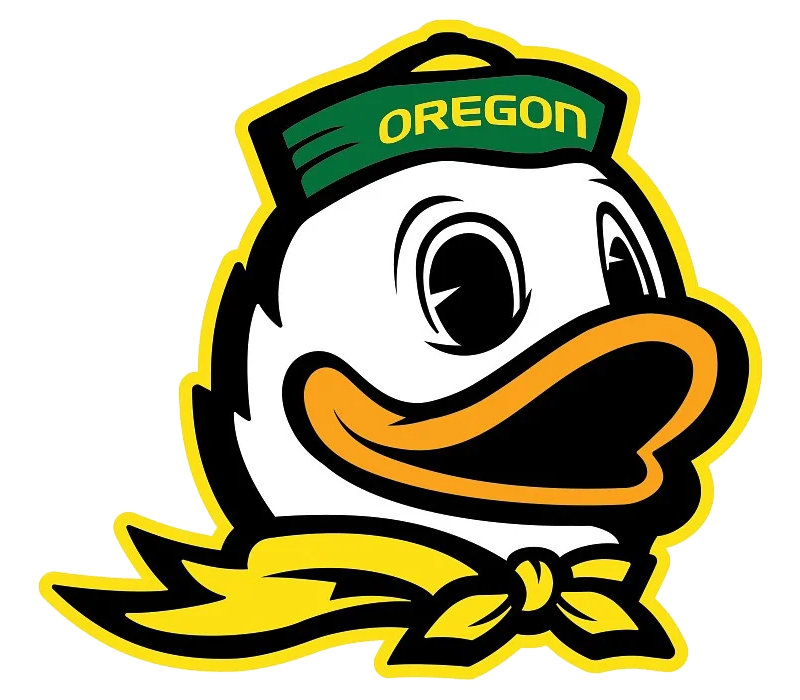

Oregon Car Accident Attorney
Over a Billion in Damages Won, Thousands of 5 Star Reviews
After a car accident, you can experience a whirlwind of activity. Your time is filled with doctor appointments, mounting medical bills, and irritating phone calls from insurance companies that you aren’t sure quite how to handle. All this when you are suffering some of the worst physical pain that you have ever experienced.
We want to make this moment easier for you. Our Oregon car accident attorneys can handle all of those insurance calls for you and make sure that your interests are protected. We will fight to make sure every last medical bill is paid for by the person who should be paying them, not you. Call Goldberg & Loren at (503) 831-9930 for a free consultation with a car accident attorney today.
According to the data from the Oregon Department of Transportation, there were 752 car accident fatalities in Oregon in 2023, up from 654 in 2022. This marks a 15% increase year-over-year, which is cause for serious concern. Moreover, Oregon now ranks 24th nationally for car accident fatalities per capita, up from 33rd in 2022. [1]
Types of Motor Vehicle Accidents in Oregon
Car accidents can occur in various ways, and they can be classified into different types based on the circumstances, impact points, and contributing factors. Here are some common types of car accidents:
- Rear-End Collisions
- Head-On Collisions
- Single-Vehicle Accidents
- Multi-Vehicle Pileups
- Side-Swipe Accidents
- Hit and Run Accidents
- Side-Impact Collisions (T-Bone Collisions)
- Pedestrian Accidents
- Bicycle Accidents
- Motorcycle Accidents
- Rollover Accidents
- Drunk Driving Accidents
These categories are not mutually exclusive, and accidents can involve a combination of factors. The severity of accidents can vary widely, from minor fender-benders to catastrophic collisions with severe injuries or fatalities.
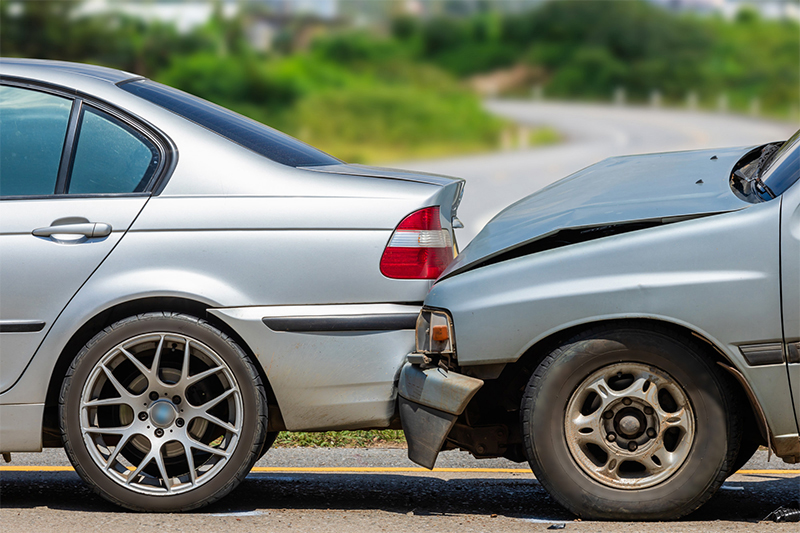
Oregon Car Accident Laws
In Oregon, the negligence law for car accidents follows a modified comparative fault system, specifically known as “Modified Comparative Negligence.” [2] Here’s how it works:
- Modified Comparative Negligence: Oregon follows a modified comparative negligence rule, which means that a plaintiff’s recovery in a car accident case is reduced by their percentage of fault, but they can still recover damages as long as they are not 51% or more at fault for the accident.
- Proportional Responsibility: Under Oregon law, each party’s degree of fault for the accident is determined based on the principles of comparative negligence. This means that the court or jury assigns a percentage of fault to each party involved in the accident, including the plaintiff and defendant(s).
- Damages Reduction: If the plaintiff is found to be partially at fault for the accident, their total damages award is reduced by their percentage of fault. For example, if the plaintiff is found to be 20% at fault for the accident and their total damages are $100,000, their recovery would be reduced by 20%, resulting in a final award of $80,000.
- 51% Bar Rule: A plaintiff cannot recover damages if they are found to be 51% or more at fault for the accident. In such cases, the plaintiff is barred from recovering any damages from other parties involved in the accident, regardless of their injuries or losses.
- Pure Comparative Negligence: Oregon follows the principle of “pure” comparative negligence, which means that even if the plaintiff is predominantly at fault for the accident (up to 50% in Oregon), they can still recover damages from other at-fault parties based on their proportion of fault.
- Joint and Several Liability: In cases where multiple parties are found to be at fault for the accident, Oregon law allows for joint and several liability. This means that each at-fault party is responsible for their share of the damages, but if one party is unable to pay their share, the other at-fault parties may be held liable for the full amount of damages.
The amount of damages awarded is reduced based on the plaintiff’s percentage of fault. Individuals involved in car accidents in Oregon need to understand these negligence laws to protect their rights and pursue fair compensation for their injuries and losses.

What Happens if The Other Driver Was Uninsured in Oregon?
If the other driver involved in a car accident was uninsured in Oregon, several outcomes may arise:
- Uninsured Motorist Coverage: If you have uninsured motorist coverage as part of your auto insurance policy, you can typically file a claim with your own insurance company for compensation. Uninsured motorist coverage is designed to protect you in situations where the at-fault driver does not have insurance or is underinsured.
- Out-of-Pocket Expenses: If you do not have uninsured motorist coverage or if your coverage limits are insufficient to cover the damages, you may be responsible for covering the expenses out of pocket. This can include medical bills, vehicle repairs, and other accident-related costs.
- Legal Recourse: You may explore legal options to pursue compensation from the uninsured driver. However, if the uninsured driver lacks sufficient assets or financial resources, recovering damages through legal action may be challenging.
- Oregon’s Insurance Requirements: Oregon law requires drivers to carry minimum liability insurance coverage. If the other driver was uninsured, they may face penalties and consequences under Oregon’s motor vehicle laws, including fines, license suspension, and potential legal liabilities.
- Seeking Legal Advice: Consult with our qualified personal injury attorneys in Oregon who are familiar with Oregon’s laws and regulations regarding uninsured motorists. We can assess your situation, advise you on your legal rights, and help you navigate the process of seeking compensation for your injuries and losses.
Dealing with an uninsured driver in Oregon can present significant challenges, but having uninsured motorist coverage and seeking legal guidance can help protect your interests and ensure that you receive the compensation you deserve after a car accident.
Injuries Associated With Car Accidents in Oregon
Car accidents in Oregon can result in a range of injuries, varying from minor to severe. Common injuries associated with car accidents in Oregon include:
- Whiplash: A common neck injury caused by the sudden back-and-forth motion of the head, often occurring in rear-end collisions.
- Soft Tissue Injuries: Injuries to muscles, tendons, and ligaments, such as sprains and strains, can result from the impact of a car accident.
- Broken Bones: The force of a collision can lead to fractures or breaks in bones, commonly in the limbs.
- Head Injuries: Concussions and traumatic brain injuries (TBIs) can occur if the head strikes an object or experiences a sudden jolt.
- Back Injuries: Herniated discs, spinal cord injuries, and other back-related problems can result from the impact of a car crash.
- Cuts and Lacerations: Broken glass, twisted metal, or other debris can cause cuts and lacerations.
- Internal Injuries: Injuries to internal organs, such as the spleen, liver, or lungs, can occur in high-impact collisions.
- Seat Belt Injuries: While seat belts save lives, they can also cause injuries, such as bruising or fractures, during a collision.
- Airbag Injuries: Deploying airbags can prevent severe injuries, but they may also cause burns, abrasions, or other minor injuries upon inflation.
- Psychological Injuries: Mental health issues, such as post-traumatic stress disorder (PTSD), anxiety, or depression, can result from the emotional trauma of a car accident.
- Amputations: In severe accidents, the impact can lead to traumatic injuries requiring surgical amputation of limbs.
- Burn Injuries: Burns can occur if a vehicle catches fire or if hot surfaces come into contact with the skin during an accident.
- Nerve Damage: The force of impact can cause nerve damage, leading to pain, numbness, or loss of function.
Seek medical attention promptly, even if injuries seem minor initially, as some injuries may not manifest symptoms immediately. Seeking medical care not only ensures proper treatment but also helps in documenting injuries for potential legal or insurance claims.
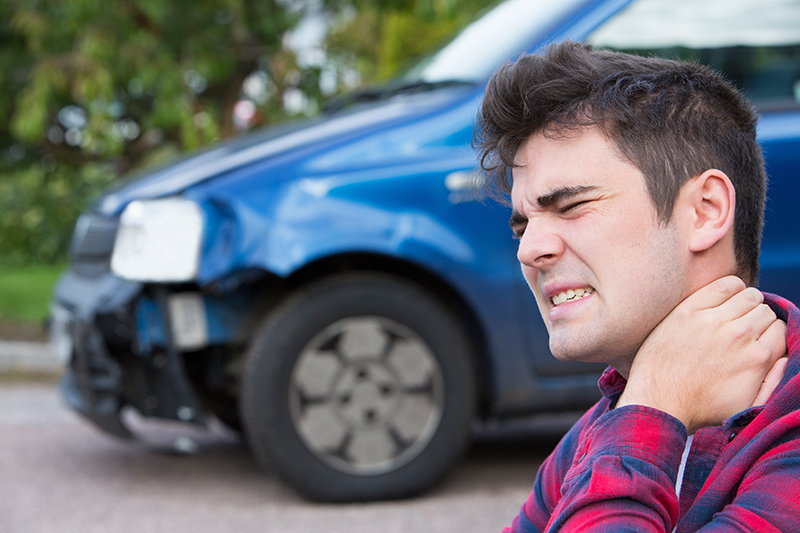
What Causes Oregon's Traffic Collisions?
When car accidents occur due to the fault of another party, you may be eligible to file a personal injury claim to seek compensation for your losses.
Oregon has a rate of drivers with prior at-fault accidents that is 11% higher than the national average, at 13.93%. This means that there is an increased risk of being involved in an auto accident if you are driving in Oregon. [2]
Here are some common causes of car accidents where the fault lies with another party, and you may have a basis for a personal injury claim:
- Distracted Driving: If the at-fault driver was distracted by texting, talking on the phone, or engaging in other distracting activities, you may have a valid personal injury claim.
- Reckless or Aggressive Driving: Actions such as tailgating, excessive speeding, or weaving in and out of traffic can lead to accidents. You can pursue a personal injury claim if the at-fault driver’s reckless behavior caused the crash.
- Drunk Driving: Accidents caused by drivers under the influence of alcohol often result in severe injuries.
- Failure to Obey Traffic Signals and Signs: If the at-fault driver runs a red light, fails to yield, or ignores stop signs, you may have grounds for a personal injury claim.
- Failure to Yield Right of Way: Accidents occur because a driver fails to yield the right of way as required by traffic rules.
- Improper Lane Changes: If the at-fault driver makes an improper lane change, causing a collision, you may be able to pursue a personal injury claim.
- Negligent Left Turns: Accidents that happen when a driver makes a left turn without properly assessing oncoming traffic may lead to personal injury claims.
- Tailgating: Following another vehicle too closely can lead to rear-end collisions.
- Inexperienced Drivers: If the at-fault driver lacks the necessary experience or training, their negligence may lead to accidents, and you can pursue a personal injury claim.
- Defective Vehicle Parts: If the accident is caused by a defect in the vehicle, such as faulty brakes or tires, it may have grounds for a personal injury claim against the manufacturer or distributor.
- Poor Road Maintenance: Accidents caused by poorly maintained roads, such as potholes or uneven surfaces, may lead to personal injury claims against the responsible government entity.
- Fatigue-Related Accidents: If a driver falls asleep at the wheel or is driving while fatigued, you may have a basis for a personal injury claim.
In these cases, we will gather evidence, such as accident reports, witness statements, and medical records, to support your personal injury claims. Consulting with our car accident lawyers in Oregon can help you understand your legal options.
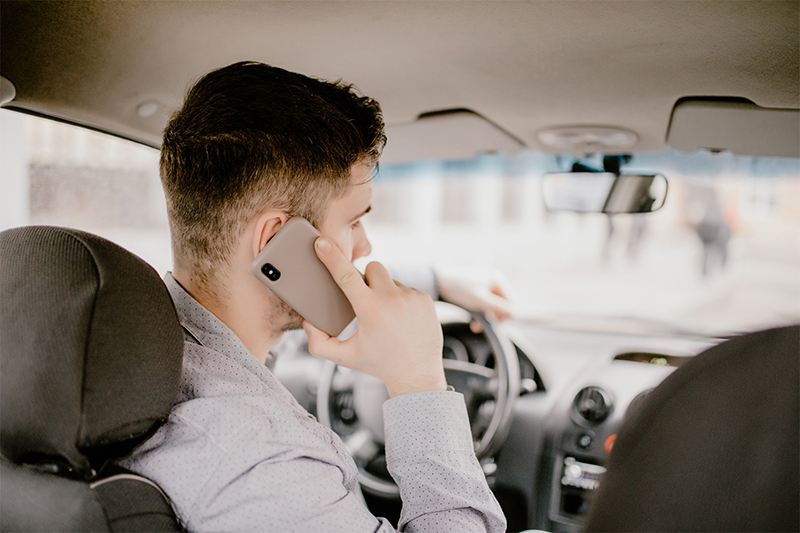
Table of Contents
-
Oregon Car Accident Attorney
-
Types of Motor Vehicle Accidents in Oregon
-
Oregon Car Accident Laws
-
What Happens if The Other Driver Was Uninsured in Oregon?
-
Injuries Associated with Car Accidents in Oregon
-
What Causes Oregon's Traffic Collisions?
-
How Much Is My Oregon Car Accident Case Worth?
-
Types of Compensation Available in Oregon
-
The Most Dangerous Roads in Oregon
-
Statute of Limitation in Oregon
-
How Our Oregon Car Accident Attorneys Can Help You
How Much Is My Oregon Car Accident Case Worth?
The value of your car accident case depends on factors such as the severity of injuries, medical expenses, lost wages, property damage, and pain and suffering.
Key considerations include the extent of your injuries, total medical costs, lost income, and property damage. Insurance policy limits, liability, and legal representation also play roles in determining compensation. Consulting with our personal injury attorneys in Oregon can help assess the specific details of your case and estimate its potential value.
Types of Compensation Available in Oregon
In Oregon, individuals injured in accidents may be eligible to receive various types of compensation, depending on the circumstances of their case. Here are the key types of compensation available:
- Medical Expenses: This includes reimbursement for past, current, and future medical costs related to the injury. It covers expenses such as hospital bills, doctor’s visits, surgeries, medication, rehabilitation therapy, medical equipment, and other necessary treatments.
- Lost Wages: Compensation for income lost due to the inability to work because of the injury. This includes wages, salaries, bonuses, and other employment benefits that the individual would have earned if not for the injury.
- Property Damage: Reimbursement for damage to personal property, including vehicles, clothing, electronics, and other belongings damaged in the accident.
- Pain and Suffering: Non-economic damages intended to compensate for physical pain, emotional distress, mental anguish, loss of enjoyment of life, and other intangible losses resulting from the injury.
- Loss of Consortium: Compensation for the loss of companionship, affection, and support suffered by the injured person’s spouse as a result of the injury.
- Disability and Impairment: Damages for any permanent disability, disfigurement, or impairment resulting from the injury, which affects the individual’s ability to perform daily activities and enjoy life.
- Punitive Damages: In cases involving egregious conduct or willful misconduct by the at-fault party, punitive damages may be awarded to punish the wrongdoer and deter similar behavior in the future.
- Wrongful Death Damages: In wrongful death cases, compensation may be available for funeral and burial expenses, loss of financial support, loss of companionship, and other damages suffered by surviving family members.
- Legal Fees and Costs: In some cases, prevailing plaintiffs may be awarded reimbursement for attorney’s fees and litigation costs incurred during the legal process.
Consulting with our experienced personal injury attorney can help you understand your legal rights and pursue maximum compensation for your injuries and losses.
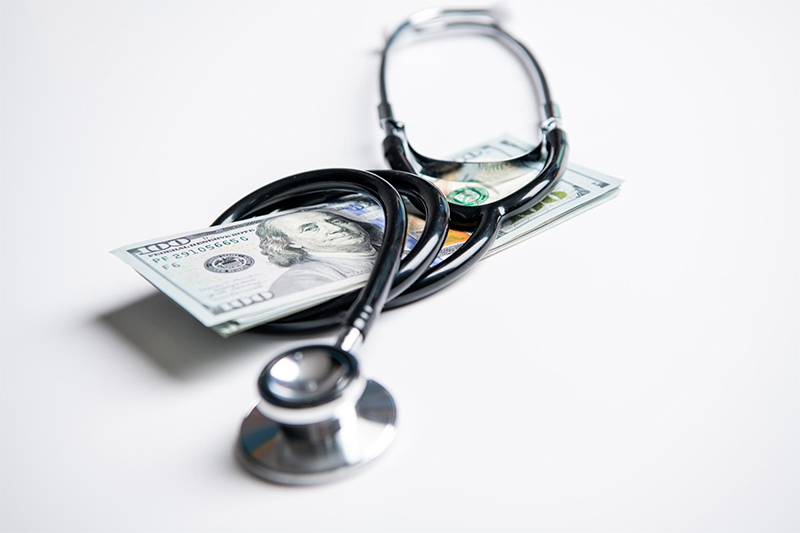
The Most Dangerous Roads in Oregon
Determining the most dangerous roads in Oregon is subjective and depends on various factors like traffic volume, crash severity, road design, and weather conditions. Some roads consistently rank high in terms of accidents and fatalities, earning them notoriety as hazardous stretches for drivers.
Here are a few dangerous roads that are frequently mentioned:
- Highway 101 (Oregon Coast Highway):
The scenic route along the Pacific coastline offers breathtaking views but comes with inherent risks. Its narrow lanes, sharp curves, steep cliffs, and frequent fog contribute to a high accident rate. In 2020, it saw an average of 35 fatalities annually. - Interstate 5:
This major north-south artery carries heavy traffic throughout the state, increasing the likelihood of accidents. Congestion, speeding, and aggressive driving are common concerns, particularly around urban areas like Portland and Salem. - Highway 97 (Central Oregon):
The long highway traverses diverse landscapes and experiences significant seasonal variations in weather. Rural stretches with limited shoulders, wildlife crossings, and challenging winter conditions present hazards for drivers. - Barbur Boulevard (Portland):
This busy urban road sees a high volume of traffic and frequent accidents, particularly at intersections. Pedestrian fatalities have been a particular concern, leading to safety improvement initiatives. - Sunset Highway (Portland):
The heavily congested highway features steep grades, sharp turns, and tunnel sections, demanding extra caution from drivers. Traffic volume and speed contribute to the risk of accidents, especially during peak hours. - Canyon Road (Washington County):
This winding road with multiple blind curves and limited visibility poses challenges, especially for unfamiliar drivers. The high-speed limit adds to the potential for severe accidents. - Southeast 82nd Avenue (Portland):
This major commercial corridor experiences heavy traffic flow and numerous intersections, increasing the risk of collisions. Distracted driving and turning movements are frequent contributing factors. - Powell Boulevard (Gresham):
The busy road sees a high volume of traffic and frequent accidents, particularly at intersections. Pedestrian fatalities have been a concern, leading to safety improvement efforts. - Highway 217 (Washington County):
This heavily traveled highway connects major suburbs and experiences congestion and speeding, raising the risk of accidents. Complex intersections and merging lanes further contribute to the challenges. - Highway 30 (Astoria to Clatskanie):
The rural highway with narrow lanes, limited shoulders, and sharp curves requires extra caution from drivers. Wildlife crossings and challenging weather conditions in winter add to the potential for hazards.

Statute of Limitations in Oregon
In Oregon, the Statute of Limitations for filing a lawsuit related to car accidents is generally two years from the date of the accident. (ORS 12.110) This means that individuals involved in car accidents in Oregon typically have two years from the date of the accident to file a lawsuit seeking compensation for their injuries, property damage, and other losses.
The Statute of Limitations is a strict deadline, and failing to file a lawsuit within the specified time frame may result in the loss of the right to pursue legal action. There may be exceptions or variations to the Statute of Limitations depending on the specific circumstances of the case, the type of injuries involved, and other factors.
How Our Oregon Car Accident Attorneys Can Help You
At Goldberg & Loren, we understand the challenges and uncertainties that follow a car accident. That’s why our team of dedicated car accident attorneys is here to guide you through every step of the legal process and advocate fiercely for your rights.
Here’s how our Oregon car accident attorneys can help you:
- Investigation and Evidence Gathering: We will conduct a thorough investigation into the circumstances surrounding your car accident, gather evidence, including police reports, witness statements, and medical records, and work with experts to reconstruct the accident scene if necessary.
- Case Preparation and Strategy: Our attorneys will develop a strategic legal approach tailored to the specifics of your case, identifying key legal issues, potential liabilities, and avenues for pursuing compensation for your injuries, damages, and losses.
- Negotiation with Insurance Companies: We will handle all communications and negotiations with insurance companies on your behalf, ensuring that your rights are protected, and that you receive fair and just compensation for your injuries and losses.
- Litigation and Trial Representation: If a fair settlement cannot be reached through negotiation, our skilled trial attorneys are prepared to take your case to court and advocate aggressively for your interests in front of a judge and jury.
- Compassionate Support and Guidance: Throughout the legal process, we will provide you with compassionate support, guidance, and regular updates on the progress of your case, answering any questions you may have and addressing your concerns every step of the way.
- Maximizing Your Recovery: Our goal is to maximize your recovery and ensure that you receive full and fair compensation for medical expenses, lost wages, pain and suffering, and other damages resulting from the car accident.
- Peace of Mind: By entrusting your car accident case to Goldberg & Loren, you can have peace of mind knowing that experienced legal professionals are fighting tirelessly on your behalf, advocating for justice and the compensation you deserve.
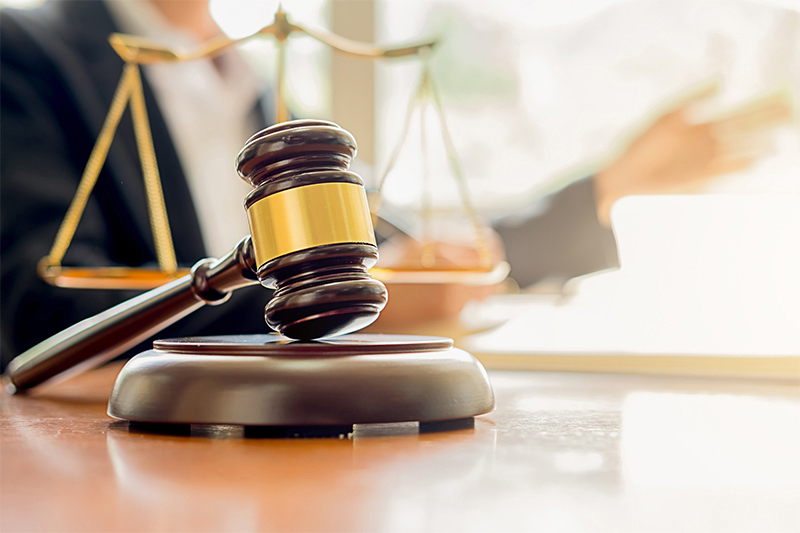
Let us handle your car accident case so that you can focus on your recovery and moving forward with your life.
Contact our local Oregon car accident attorneys today to schedule a free consultation and learn more about how we can help you during this challenging time.
FAQs
Ensure everyone's safety, call 911, exchange information with the other party, and document the scene with photos. Report the accident to the Oregon DMV within 72 hours if there are injuries or property damage over $2,500.
Oregon follows a modified comparative fault system. Each party's percentage of fault is assessed, and if you are found less than 51% at fault, you can seek compensation. However, your recovery is reduced by your percentage of fault.
The Statute of Limitations for personal injury and property damage claims in Oregon is generally two years from the date of the accident. File within this timeframe to preserve your right to seek compensation.
Sources:
[1] Brian, B. (2023, November 30). Oregon Car Accident Fatalities in 2023: Statistics and Analysis. Pass&rail-Oregon. https://www.oregonpassengerrail.org/fatal-car-accident-oregon-statistics/
[2] Chapter 31 — Tort Actions 2023 EDITION. (2023). Oregon Legislature. Retrieved February 17, 2024, from https://www.oregonlegislature.gov/bills_laws/ors/ors031.html

We fight hard for our clients who have been injured in a car accident in Oregon. Our personal injury lawyers fight for maximum compensation.
George Goldberg
Senior Partner
Have Questions About Your Case? Call Us Today: